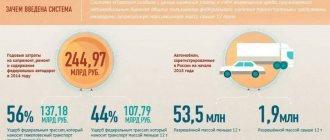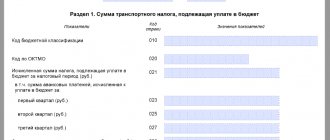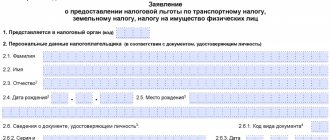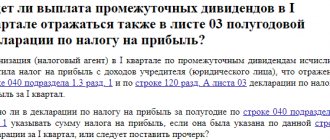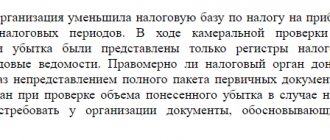The proposal of Deputy Minister of Industry and Trade of the Russian Federation Alexander Morozov to radically increase the basic transport tax rate for vehicles with the environmental class Euro-3 and lower from January 1, 2021 will affect only commercial vehicles. NEWS.ru was told about this by the department itself. Experts have already expressed their bewilderment about the upcoming tax changes in relation to car owners who make a living from hard transportation work.
In accordance with existing government instructions, the Ministry of Industry and Trade, together with federal executive authorities, is preparing proposals to increase transport tax rates for commercial vehicles of environmental class 3 and below, the number of which, according to our estimates, exceeds 3 million units. This equipment daily causes irreparable damage to the environment and the health of citizens of the Russian Federation , the ministry told NEWS.ru.
According to officials, the proposed measure will increase the attractiveness of new and more environmentally friendly vehicles, which will have a positive impact on the environment.
In turn, the State Duma proposes to expand the initiative of the Ministry of Industry and Trade and introduce a ban on cars of the Euro-0 and Euro-1 classes. Chairman of the State Duma Committee on Transport and Construction and President of the Association of International Road Carriers Evgeny Moskvichev told NEWS.ru about this.
I want cars of the Euro-0 and Euro-1 classes to be completely taken out of service within two years. I'm talking about commercial vehicles. We are talking about cars that are 30–35 years old. Or they should switch to an environmentally friendly engine (install it in an old car), or completely ban their operation. We need a clean country and clean nature. We must leave a clean country to our children and grandchildren.
Evgeny Moskvichev
Chairman of the State Duma Committee on Transport and Construction and President of the Association of International Road Carriers
Is the environmental class of a car important for transport tax?
The value of the parameters involved in the calculation of transport tax largely depends on the rules established in the constituent entities of the Russian Federation (Article 356 of the Tax Code of the Russian Federation).
Regions are given the opportunity not only to independently introduce benefits, establish the procedure and terms of payment, but also determine the rate for calculating tax. The rate depending on the type of transport is tied to different parameters. For auto, motorcycle, non-jet aircraft, self-propelled water transport, it depends on the engine power. The basic rates are given in the Tax Code of the Russian Federation (clause 1, Article 361), but in the region they can change both upward and downward and differentiate. It is important that the final result does not deviate from the basic one by more than 10 times and does not concern a car with a power not exceeding 150 hp. With. (Clause 2 of Article 361 of the Tax Code of the Russian Federation).
Differentiation of rates may be related (clause 3 of Article 361 of the Tax Code of the Russian Federation):
- with the category of transport;
- his age;
- environmental class.
Thus, the environmental class of the vehicle for transport tax becomes important when choosing a rate, if such a dependence is established by the law of the region. In the transport tax return, line 110 in section 2 is allocated to indicate the environmental class. If the rate is not tied to this indicator, then a dash will be placed in the corresponding line (letter of the Federal Tax Service of Russia dated July 20, 2012 No. BS-4-11/12083).
Read more about the procedure for filling out a declaration in the article “Procedure for filling out a transport tax return.”
Payment of environmental tax on transport in 2021
The formula for calculating the amount paid to the Tax Service includes the power indicators of the engine installed in the car. The resulting value decreases or increases depending on the region of registration of the vehicle. The final amount of the environmental tax is influenced by the state of the environment, the number of cars owned by the local population and the condition of the road surface.
When applying the tax rate, Federal Tax Service employees will pay attention to the following indicators:
- engine capacity;
- environmental class of the machine;
- age of the car.
The environmental tax was planned to be introduced in 2014, but the outbreak of the crisis prevented it. As the economy entered a stable phase of development, talk about saving the environment through financial measures resumed. By 2021, the introduction of the tax is practically a done deal.
Why is this being done? Cars that are 10 years or more old do more than just pollute the air. They are unsafe for their owners. Over time, mechanisms wear out, and modern technologies offer more life-saving options. After all, it all started with a cart, and then they didn’t know about seat belts and airbags.
In practice, replacing the vehicle fleet in Russia will take at least 5 years. This is expensive for people with average incomes. Many see the innovation as a way to undermine their family budget. Among the arguments against the environmental tax are the following:
- multiple increase in the amount charged;
- rising costs of operating used cars, the repair of which, therefore, requires constant spending;
- if the fleet of entrepreneurs is outdated, they will not be able to update it and will go bankrupt;
- Government spending will also increase, since organizations with budgetary funding will have to change cars.
Owners of cars with electric motors will be lucky. They do not pay environmental tax. Because it replaces the transport tax, they now owe nothing to the state for using the car.
Ecological class of a vehicle - what is it?
What characterizes the environmental class of a car taken into account when calculating transport tax?
The operation of a car is accompanied by the release of pollutants. Their composition is determined:
- harmful substances contained in exhaust gases;
- vapors generated from a certain type of fuel.
The volume of these substances creates a very specific level of pollution that occurs during the operation of a passenger car or truck. According to this, vehicles were divided into environmental classes.
In the Russian Federation, the division established by the decision of the Customs Union Commission dated December 9, 2011 No. 877 is currently applied (subclause 1.4 clause 1 of Appendix No. 1). According to it, 6 environmental classes are distinguished (from 0 to 5). Each of them is tied to certain types of vehicles and the type of fuel on which their engine runs, and is correlated with the rules that determine the permissible level of emissions arising from the operation of a working car. A higher environmental class corresponds to a lower emission level.
What to expect and what is planned to be taken into account when calculating?
It is planned to introduce an environmental fee based on the example of countries in which a similar system is already in effect, so we can assume the main calculation parameters and possible problems that both motorists and regional authorities will have to face.
About the type and class of car
The type, or rather the class, of transport should become one of the main indicators for calculating the environmental tax. Thus, in Russia, most cars are classified as Euro-1, which means a high level of CO2 emissions.
With this approach, the optimal classes for transport will be Euro-3 and Euro-4. Owners of cars with electric motors will benefit the most - for them the duty will be zero.
Of course, changing tax rates will require replacing vehicle fleets. For trucks and buses, replacement periods are said to be 15-20 years, and for commercial vehicles - 20-25 years.
About emissions
The amount of fees will be calculated based on the amount of carbon dioxide per 1 km of travel: the lower the amount of emissions, the lower the tax amount. This is determined based on the class of the vehicle and the type of fuel used.
According to preliminary calculations, the amount of the environmental fee will be significantly higher than the transport tax.
It is also planned to change excise rates on gasoline - the higher the environmental class of the fuel, the lower the rate, which should also lead to the renewal of the country's vehicle fleet and an improvement in the environmental situation.
About the age of transport
The older the car, the more CO2 it emits into the atmosphere. The age of the vehicle will also most likely be one of the parameters in calculating the fee. The estimated time frame after which transport is recognized as a threat to the ecology of the region is known, although certain changes are possible in this regard.
Thus, the following recommended periods for the planned replacement of vehicles are called:
- for passenger vehicles – 10 years;
- for trucks – 15 years;
- for buses – 15 years;
- for commercial vehicles – 20-25 years.
How to find out the environmental class?
However, in order to find out which class the car belongs to, there is no need to refer to the above decision of the Customs Union Commission. This can be done in a simpler way.
The environmental class is indicated in a special line (No. 13) of the modern vehicle passport form (PTS). The environmental class number is given here not in numbers, but in words. In the old version of the PTS, which does not provide for a special line, a note about the environmental class number may appear in the “Special notes” column in the upper left corner of the document.
To learn how to convert the engine power of a car, indicated in the PTS in kilowatts, into horsepower, read the material “Transport tax on cars in Russia 2021 - 2020.”
Approximate calculations and comparison with transport fees
Since the exact tax rates and calculation mechanisms are not yet known, one can only guess how much the introduced fee will cost citizens. However, it is obvious that its amount will increase compared to the transport tax. There are several versions regarding the calculation of the duty.
- Unlikely. According to it, the tax will be the sum of the amount of carbon dioxide emitted, multiplied by the rate and the annual mileage. Why is this option unlikely? Even if we assume that the rate is 0.5 rubles. for 1 g of CO2, the amount turns out to be impressive. A minute of mathematics: let's assume that a car emits 100g of CO2 per 1 km, and the annual mileage is 1000 km. Then the amount that will need to be paid to the owner will be 50,000 rubles.
- The fee can also be calculated based on the vehicle class, engine size and service life. In this case, the largest payment will fall on owners of used cars. Experts suggest that the law will provide discounts for owners of high-eco class cars.
It is impossible to say exactly how the amount of the fee will be calculated, whether the mileage of the car will affect it and whether additional benefits will be introduced.
There is not only an environmental tax, but also on luxury, winnings, and the import of vehicles. You can read about the nuances of these types of taxes, as well as taxes for old cars, self-propelled vehicles, motorcycles, trucks and electric vehicles on our website.
Results
One of the indicators that influences the applicable transport tax rate may be the environmental class to which a particular vehicle belongs. Whether to use it depends on the decision made when setting rates in the region.
The class number is indicated in the PTS of a modern vehicle in a specially designated line. If the PTS is issued on an old form, then information about the environmental class number may be reflected in the “Special notes” column.
Sources:
- Tax Code of the Russian Federation
- By decision of the Customs Union Commission dated 09.12.2011 No. 877
You can find more complete information on the topic in ConsultantPlus. Free trial access to the system for 2 days.
Eco-friendly cars may be exempt from vehicle tax throughout the country
The Ministry of Economic Development is seriously considering the possibility of reducing or eliminating the transport tax on environmentally friendly cars throughout the country, Izvestia reports. At the same time, both electric cars and cars running on gas engine fuel are considered as environmentally friendly transport.
In fact, at the moment, such benefits for gas-powered and electric cars already exist, but they are introduced by a specific region, and therefore are applied scatteredly within the country . While, for example, in the Sakhalin region, owners of electric cars pay half the tax, in Bashkortostan they are completely exempt from it.
The same is with gas engine technology : each region independently decides what kind of benefits (full or partial abolition), for how long and for which owners to introduce, and whether to introduce at all... Because somewhere relaxations may apply to all environmental transport regardless of who owns it, and somewhere (as, for example, in the Nizhny Novgorod region) - on cars of legal entities and individual entrepreneurs.
Thus, the Ministry of Economic Development wants to introduce a unified approach for the entire country by prescribing a reduction or elimination of the transport tax for electric vehicles and gas-powered vehicles at the federal level. It is believed that this should increase the demand for environmentally friendly modes of transport and thereby subsequently reduce emissions of pollutants into the atmosphere.
Previously, by the way, the Government also considered another approach to replacing the vehicle fleet with a more environmentally friendly one - a multiple increase in the transport tax on Euro-3 cars and lower environmental class . True, this initiative concerned only commercial equipment.
The Ministry of Economic Development also proposes to stimulate demand for cars with low fuel consumption . To achieve this, according to the department, special subsidies can be introduced for the purchase of cars with an engine capacity of up to 1 liter .
The ministry must prepare and submit its list of measures for environmentally friendly transport for consideration by the end of the second quarter of this year .
At the same time, it is worth noting that in some regions there are already programs supporting the transition of transport to gas engine fuel : the federal budget covers 60% of the cost of vehicle conversion .
In general, according to plans, by 2024 the number of gas-powered vehicles should increase to at least 274 thousand units , while by the middle of last year there were almost 2 times less - about 155 thousand. For this, they also intend to develop refueling infrastructure , which currently cannot ensure the free movement of electric and gas-powered vehicles throughout the country.
For example, by 2024, the country expects to build about 1.3 thousand gas filling stations (so far their number is somewhere around 500). By the same time, Rosseti also wants to expand its infrastructure to 1.3 (they currently serve 263 stations).
To the next level
The Ministry of Industry and Trade puts pressure on the gas: Russia is disappointed in electric cars
The authorities have significantly adjusted the development strategy of the national automobile industry
New support measures should have a positive impact on the development of environmentally friendly transport, says Vladimir Gutenev, First Vice-President of the Russian Union of Mechanical Engineers.
— We support these initiatives. In terms of support for car owners using gas and gas mixtures as motor fuel, in some regions the transport tax has already been abolished or significantly reduced. This gives good growth rates for the fleet of such vehicles,” he said.
A transport tax benefit of 50% for organizations and individual entrepreneurs is provided in the Nizhny Novgorod region, for individuals - in the Republic of Bashkortostan, recalled Vladimir Gutenev. In the Novosibirsk region, transport companies pay a fee of 10% of the established rates. In the Republic of Tatarstan, a state program for the development of the gas motor fuel market has been approved, providing for both tax incentives and compensation for purchased equipment, the expert noted.
Vigorous measures
Photo: Depositphotos
Old people shouldn’t drive here: deputies proposed banning junk cars
They want to ban older cars from the roads
Various tax breaks for owners of natural gas vehicles are also available in St. Petersburg and the Leningrad region. They are also in the Vladimir, Kaluga, Kostroma, Kaliningrad, Kirov, Kemerovo, Kurgan, Samara, Sakhalin, Smolensk and Chelyabinsk regions, as well as in the Khanty-Mansi Autonomous Okrug, Adygea, Transbaikalia, Chuvashia and Bashkortostan, noted auto expert Pyotr Bakanov.
The measures being discussed will have a positive impact on the state of the environment, says Rashid Ismailov, Chairman of the Russian Ecological Society. In practice, they have already shown effectiveness in the Chelyabinsk region, he noted. There is a demand among car owners for the greening of personal vehicles, the expert added.
